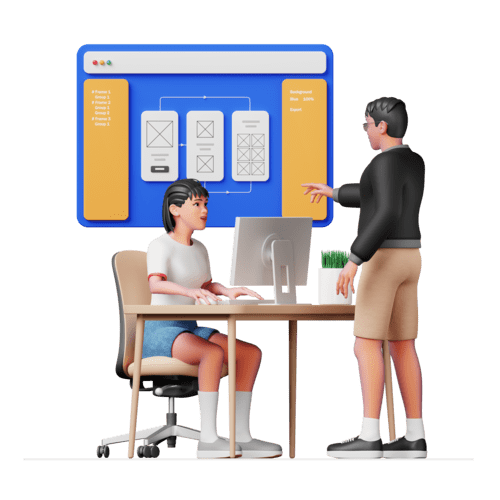Address
Egnatia 154 Thessaloniki 54636 Greece
We create specialized and effective web development solutions that meet the needs of every business.
Our services
We undertake comprehensive web design and development solutions, from UX/UI design and development, to marketing & SEO, ensuring the successful online presence of your business.
We strive to create amazing user experiences.
We focus on developing strategies that increase visibility
We ensure successful business recognition.
We create functional and secure websites that are customizable.
Price plans
Choose the right website development package that meets the needs of your business, offering quality and customizable solutions that cover simple to advanced requirements.

Prices start from
VAT not included.
The Basic package provides everything you need to get a professional online image, with easy management and quick implementation.

Prices start from
VAT not included.
The Dynamic package offers advanced features, custom modules and greater freedom in content management.

Prices start from
VAT not included.
The Premium package is aimed at businesses that want to impress with their image and enjoy top digital services.

Prices start from
VAT not included.
The Supreme package is designed for those who want to stand out in the market with a website that combines unique design, advanced features and digital marketing strategies.
Our team
We are a team of experienced web design and development professionals, combining our love of technology with our commitment to provide customized and innovative solutions for every business.
At TWO DOTS, we don't just create websites; we offer strategic solutions that are tailored to your goals, allowing you to grow your business with unique design and optimal functionality.


We understand that creating a website is an important step in the development of a business and that is why we work hard to provide high quality services to each of our clients.
From the first contact to the completion of the project and beyond, our team is by your side, offering continuous support and customized solutions that ensure the success of your website.

Selected projects
We provide continuous support and maintenance for the websites we have undertaken, ensuring their stable and reliable operation.
Education Institute
Commercial Enterprise
Commercial Enterprise
Commercial Enterprise
Commercial Enterprise
Education Centre
Reviews
We take pride in our professional work and the quality of our services, and customer feedback is our primary source of inspiration and feedback to become better.
Let's start building websites in the style and concept of your business.
You can stay informed about the latest news and developments in the field of web design and implementation.

Do you have loyal users and want to get more out of them? Learn how to turn your power users into content creators! These users, with their authenticity and influence, can boost your brand awareness and increase customer engagement. Discover strategies to activate Power users to become your best brand ambassadors and enhance your marketing strategy through user-generated content. Give them the right incentives and watch your sales increase!

Discover how AI is evolving SEO strategies and enhancing Brand Correlation, offering new possibilities to professionals and e-shops. Through improving user experience, increasing brand awareness and leveraging smart techniques, AI is becoming an essential tool to achieve successful marketing strategies in the digital world. Read how you can integrate effective AI practices into your business and achieve professional excellence.

Discover the Social Media Marketing strategies and trends that will dominate in 2025 and enhance your business growth in the online environment. Learn how incorporating new technologies and practices, such as video marketing and remarketing techniques, can improve interaction with your audience and promote awareness of your business. Also see the perspectives and challenges raised by changes in algorithms and the growing importance of integrating multiple marketing channels.